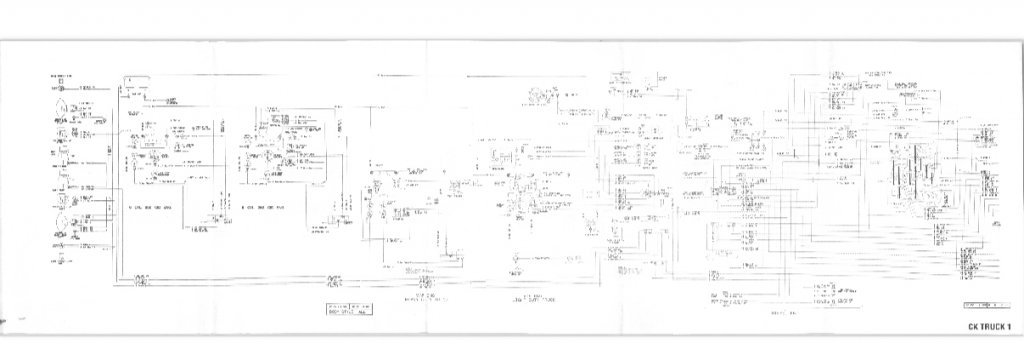- Joined
- Jan 14, 2024
- Posts
- 97
- Reaction score
- 93
- Location
- Cumberland, NJ
- First Name
- A
- Truck Year
- 1985
- Truck Model
- K10
- Engine Size
- 350
I get the sense you are looking for some easier di-ag options. Pull the flasher relay. That will isolate the TS circuit. if it’s still warm, look up stream, or maybe at the break light circuit. Another direction; I do like the idea of stepping down fuse size until you get a pop. It will tell you how big of a draw you are looking at which might help you know where to look and diagnose the problem. The smaller the fuse, the harder it will be to find the problem. This isn’t a dead short or you would have no fuse options (as stated). Since it is heating up a 15amp fuse (which is what the specs call for) my money is that you won’t get much below a 10amp before it blows. Above 10amps on a 16 gauge wire and it will burn the wire and you would have already used a fire extinguisher at this point.
Let’s assume you have a corroded socket or F’ed-up bulb some how jumping current for the sake of argument that is shorting and flowing current. Something easy to check is pull the bulbs out of the blinker sockets one at a time. Corrosion will be easy to diagnose in the socket visually. Checking across positive and negative with a meter is a good idea and, as stated, if there is enough of a draw you can use a test light. Disconnect the battery. Put the Test light between the battery and the terminal and see if you get a glow. Pull the bulbs one at a time and see if it goes out (or the meter drops). Corrosion in the blinker sockets “could” create short/draw like that, and create a slow, low amp draw and not light the turn signal bulb.
Since the problem has persisted even after you bypassed the original fuse box, I would focus on the TS circuit. Turn the signals on and see if the temp of the fuse drops (thinking as I am typing) only the affected circuit will drop the temp as you are effectively bypassing a short by using the signal bulb, but only when the bulb is illuminated. When it’s off it will pull power from the short. That will tell you at least what side of the truck it’s on maybe. Hit the brakes and hold them, if it is a rear light it may do the same. You may need to use an IR thermometer on the fuse. If you pull every bulb and still have a draw, you know to look upstream and not focus on the distant wiring.
I am just the good idea fairy here, it’s a tough problem to diagnose; a lot smarter people on here that can help and may disagree.
Let’s assume you have a corroded socket or F’ed-up bulb some how jumping current for the sake of argument that is shorting and flowing current. Something easy to check is pull the bulbs out of the blinker sockets one at a time. Corrosion will be easy to diagnose in the socket visually. Checking across positive and negative with a meter is a good idea and, as stated, if there is enough of a draw you can use a test light. Disconnect the battery. Put the Test light between the battery and the terminal and see if you get a glow. Pull the bulbs one at a time and see if it goes out (or the meter drops). Corrosion in the blinker sockets “could” create short/draw like that, and create a slow, low amp draw and not light the turn signal bulb.
Since the problem has persisted even after you bypassed the original fuse box, I would focus on the TS circuit. Turn the signals on and see if the temp of the fuse drops (thinking as I am typing) only the affected circuit will drop the temp as you are effectively bypassing a short by using the signal bulb, but only when the bulb is illuminated. When it’s off it will pull power from the short. That will tell you at least what side of the truck it’s on maybe. Hit the brakes and hold them, if it is a rear light it may do the same. You may need to use an IR thermometer on the fuse. If you pull every bulb and still have a draw, you know to look upstream and not focus on the distant wiring.
I am just the good idea fairy here, it’s a tough problem to diagnose; a lot smarter people on here that can help and may disagree.


